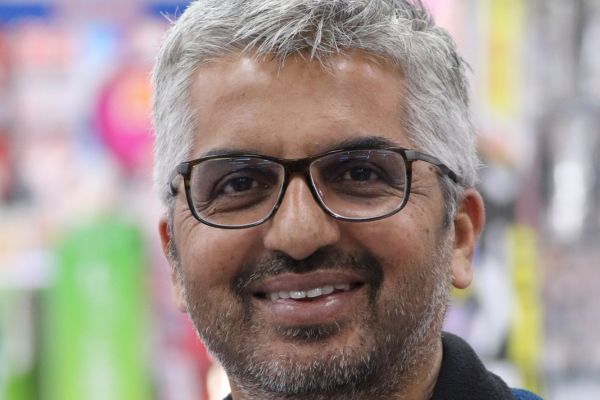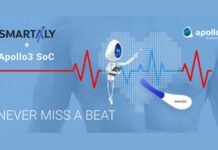The healthcare sector, like many others, has undergone significant changes due to technological advancements. Remote Patient Monitoring (RPM) has emerged as a crucial solution connecting healthcare providers and patients, allowing the provision of high-quality care beyond traditional clinical settings. The global pandemic has underscored the vital need for remote healthcare services, leading to an exceptional surge in the RPM market.
In this article, we will explore the remote patient monitoring market, its potential, and the advantages it brings to both patients and healthcare providers.
Evolution of Remote Patient Monitoring
The roots of remote patient monitoring can be traced back to the early days of telecommunication. As early as the 1800s, medical professionals explored the idea of remotely sharing patient data via telephone, an initial concept resembling modern RPM systems. The development of radio and television in the 1920s paved the way for more advanced telemedicine applications, culminating in the transmission of x-ray images via telephone in 1948, marking a significant milestone in medical history.
Over the decades, telemedicine and RPM progressed steadily, driven by technological innovations. From the basic sharing of scan images through coaxial cables in the 1950s to the pioneering use of closed-circuit TVs for remote patient consultations in the 1960s, the journey toward modern RPM saw continuous advancement. The widespread use of the internet in the 1990s ushered in a new era of connectivity, facilitating more efficient transmission of patient data by medical professionals. In the recent years, the technology advancements in networking and communication, hardware and software ecosystem, innovations, lowering of cost has increased adoption of Remote Patient Monitoring.
The Modern Era of Remote Patient Monitoring
The remote patient monitoring market has experienced remarkable growth recently, with projections indicating further expansion. Market research reports reveal that the global remote patient monitoring market was valued at $53.6 billion in 2022 and is anticipated to reach $175.2 billion by 2027, exhibiting a compound annual growth rate (CAGR) of 26.7% from 2022 to 2027. Factors contributing to this growth include the rising prevalence of chronic diseases, an aging population, and the demand for cost-effective healthcare solutions.
Today, remote patient monitoring has evolved beyond its initial stages, leveraging wireless cellular connectivity to usher in a new era of digital healthcare. These mobile-enabled RPM systems offer various benefits, such as real-time monitoring of vital signs, improved communication between patients and healthcare providers, and increased accessibility to medical care.
Unlocking the Potential of Remote Patient Monitoring
The global market for RPM devices is witnessing exponential growth, fueled by the growing demand for advanced monitoring solutions. Devices like heart monitors, glucometers, pulse oximeters, and spirometers are revolutionizing the management of chronic conditions. By providing clinicians with real-time access to patient data, these devices empower healthcare providers to deliver personalized and proactive care, ultimately enhancing patient outcomes and reducing healthcare costs.
Fast Rise in Remote Patient Monitoring: Meeting the Needs of a Changing Landscape
Although the concept of remote patient monitoring has been evolving for decades, its growth trajectory has undergone a significant acceleration in recent times. The onset of the COVID-19 pandemic has expedited the adoption of RPM solutions, leading to exponential growth. With various remote monitoring solutions now available, companies can offer assistance to a vast customer base, transforming healthcare delivery on a monumental scale.
Advantages for Patients:
Enhanced Accessibility: RPM allows patients to receive healthcare services from the comfort of their homes, eliminating the need for frequent hospital visits. This is particularly advantageous for individuals with mobility issues or those in remote areas with limited access to healthcare facilities.
Continuous Monitoring: RPM enables the continuous monitoring of vital signs, such as heart rate, blood pressure, and blood glucose levels. This constant surveillance allows for the early detection of abnormalities, facilitating timely interventions and reducing the risk of complications.
Improved Patient Engagement: RPM encourages active patient involvement in managing their health. By providing real-time data and personalized insights, patients become more engaged in their care, leading to better treatment adherence and outcomes.
Democratization of Care: RPM makes healthcare services and resources more accessible and available to a broader population. This involves removing barriers to healthcare access, such as cost, location, or social status, and ensuring that everyone, regardless of their background or circumstances, has equal opportunities to receive quality care.
Benefits for Healthcare Providers:
Efficient Resource Allocation: RPM allows healthcare providers to allocate resources efficiently. By remotely monitoring patients, providers can prioritize critical cases, reduce unnecessary hospital admissions, and optimize healthcare personnel allocation.
Proactive Care and Early Intervention: Remote monitoring enables healthcare professionals to identify deteriorating conditions or non-compliance with treatment plans in real-time. Prompt intervention can be provided, including necessary guidance or adjustments to treatment plans, preventing complications or hospital readmissions.
Cost Savings: RPM holds the promise of substantially cutting healthcare expenses through the reduction of hospital stays, visits to the emergency room, and instances of readmission. This allows healthcare providers to achieve cost savings while maintaining high-quality care.
Opportunities and Challenges
While the Remote Patient Monitoring market holds immense potential, it faces challenges that need addressing. These include concerns about data security and privacy, interoperability issues, and the necessity for reimbursement models that appropriately reward healthcare providers for remote care services. Successfully overcoming these obstacles will facilitate the widespread adoption of RPM and its seamless integration into regular healthcare practices.
The Future of Remote Patient Monitoring
The future of remote patient monitoring appears promising, with ongoing innovation poised to reshape the healthcare landscape. Many companies are dedicated to advancing innovation in medical technology and developing robust RPM solutions. As the global healthcare industry embraces digital transformation, remote patient monitoring will play an increasingly pivotal role in delivering accessible, efficient, and patient-centric care to individuals worldwide.















